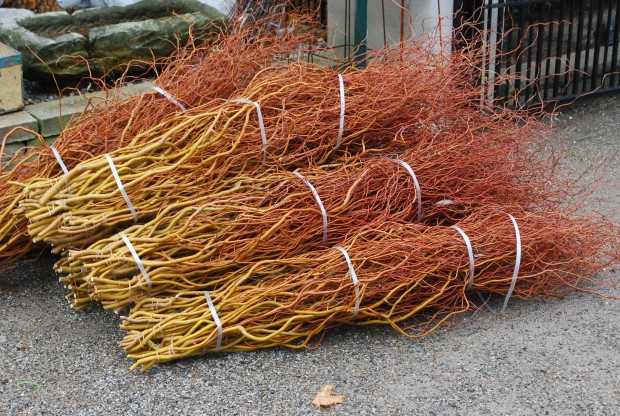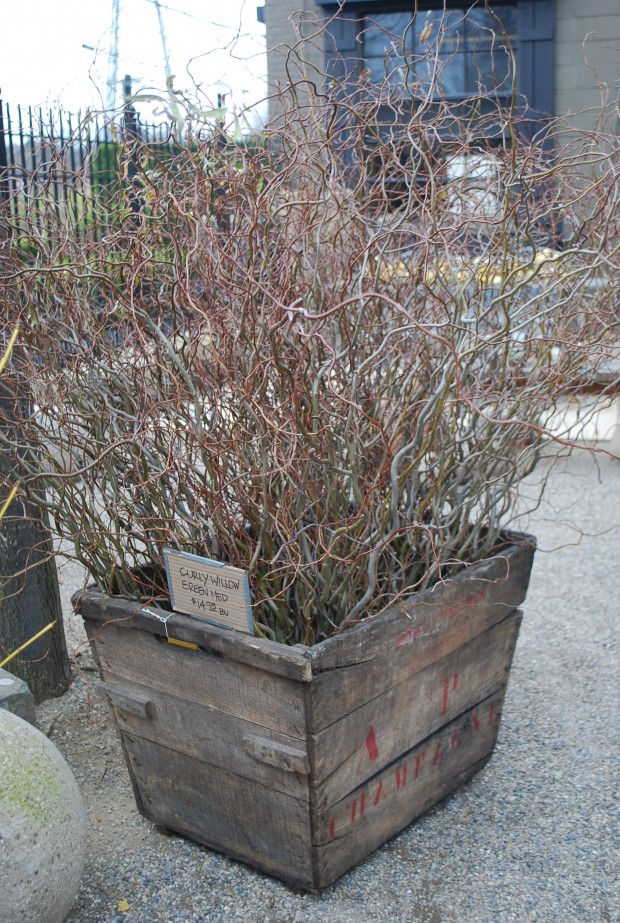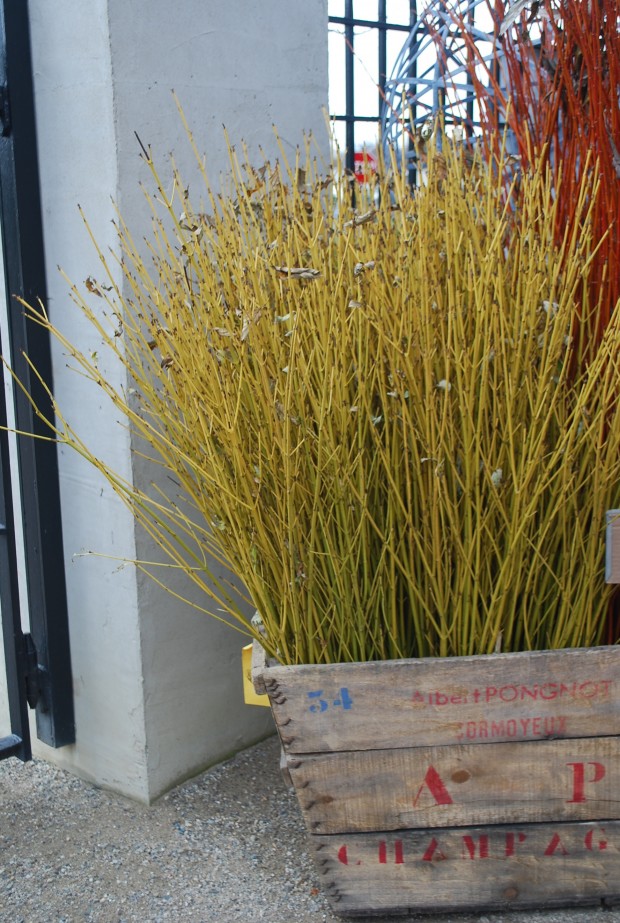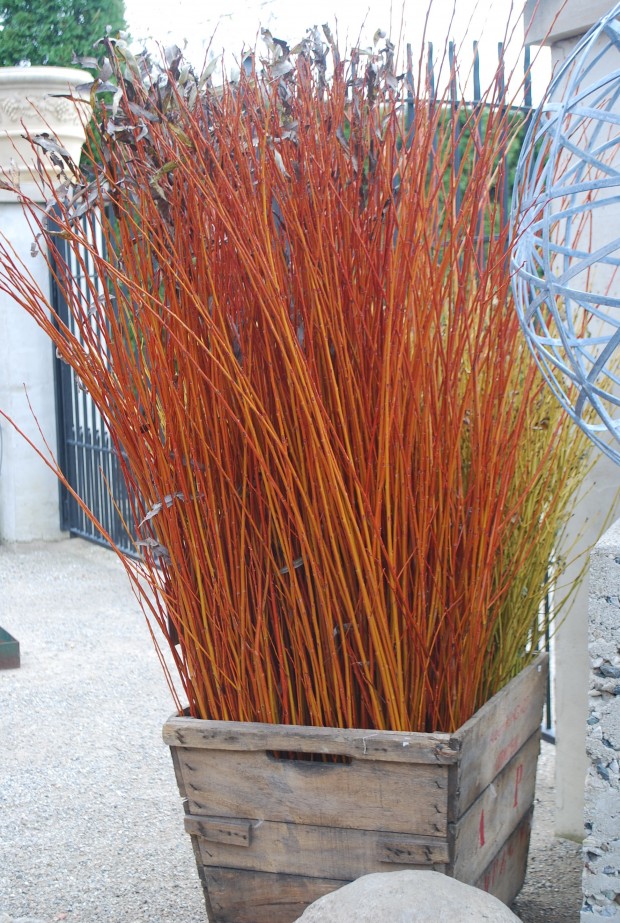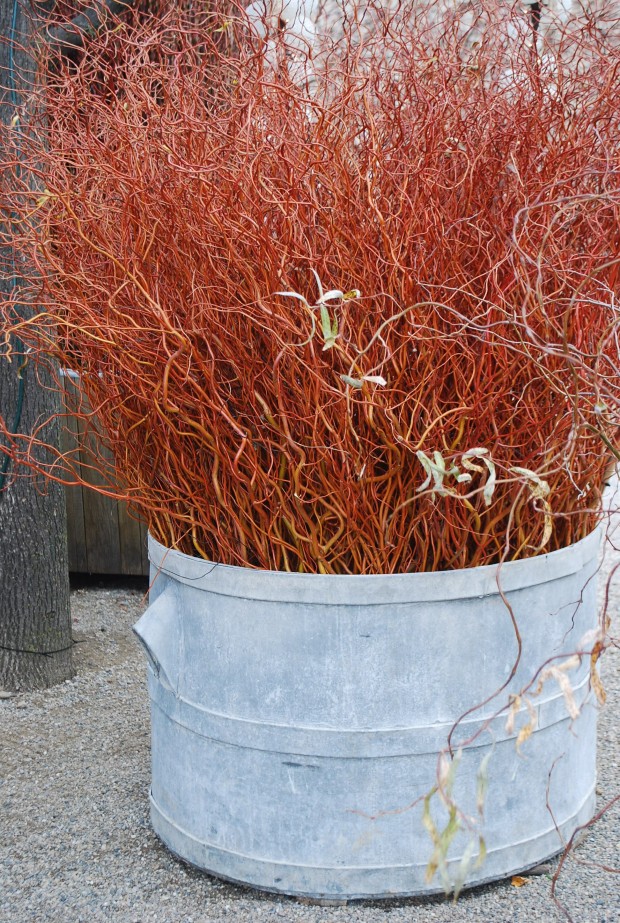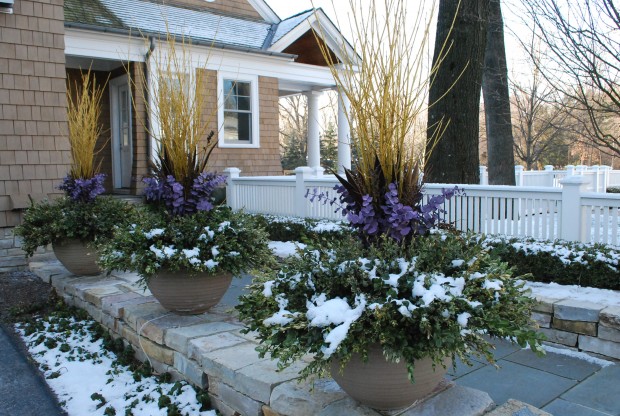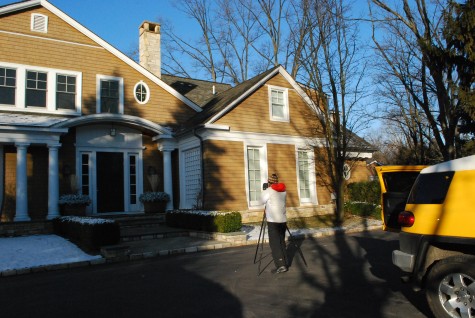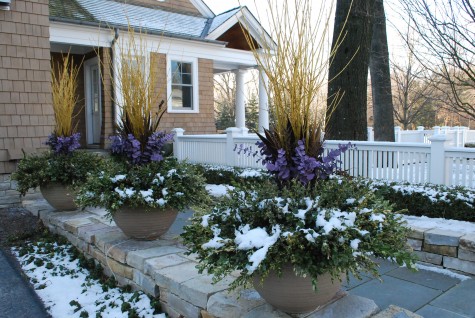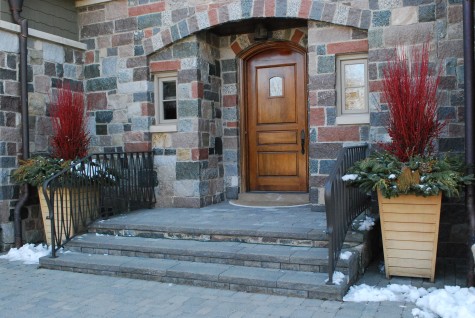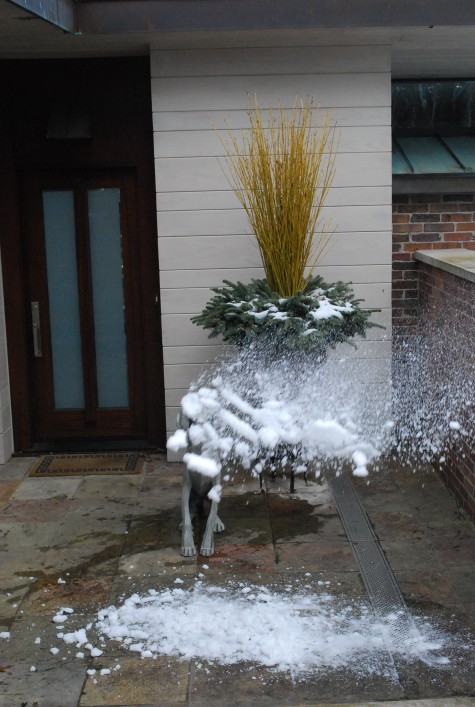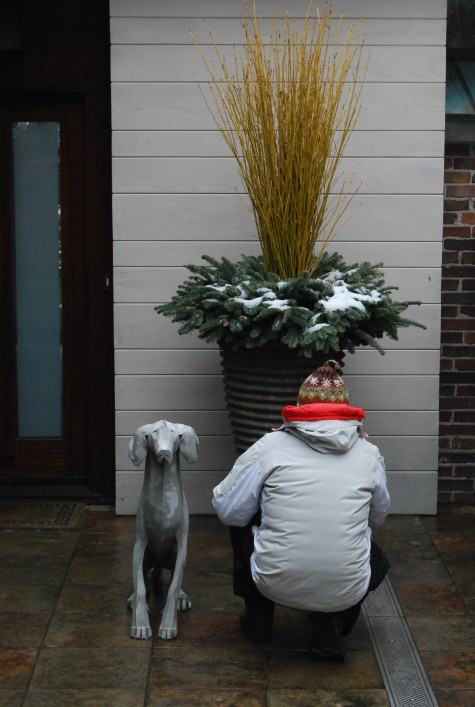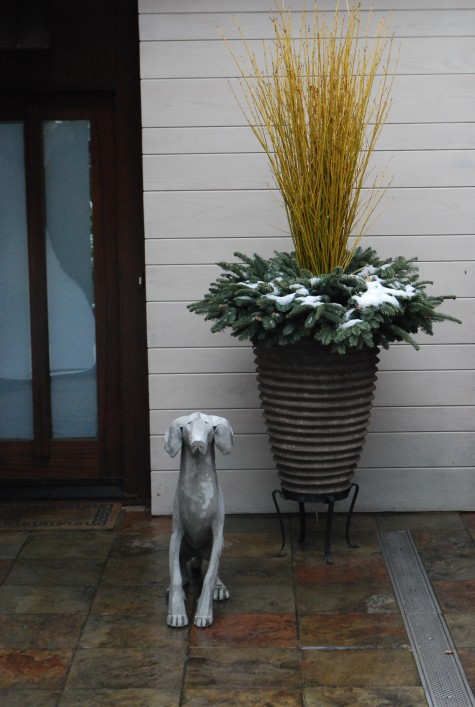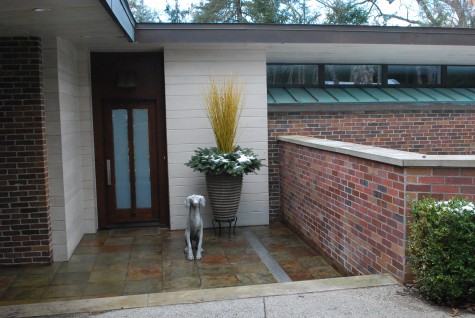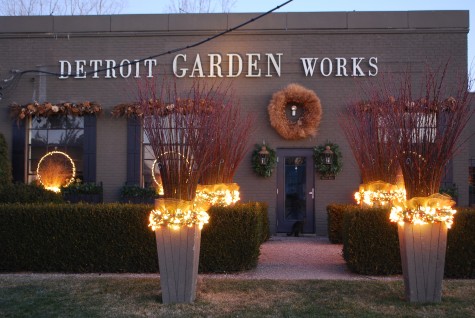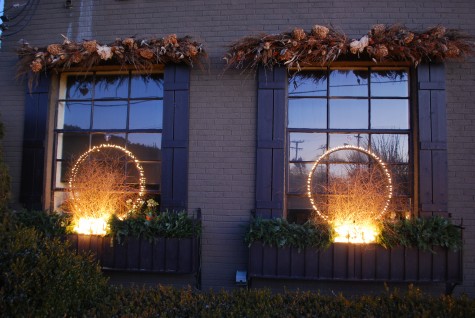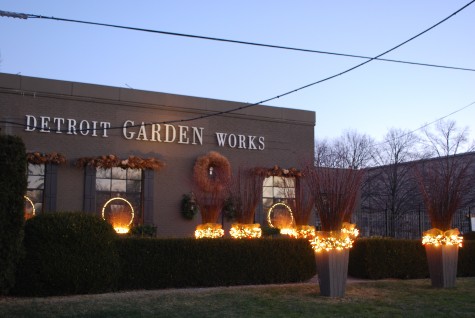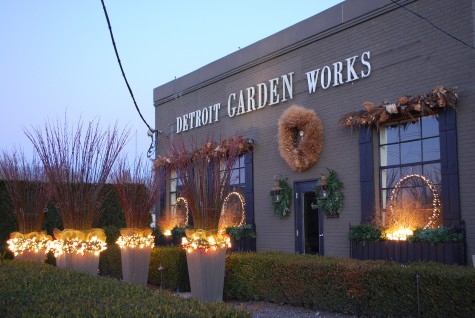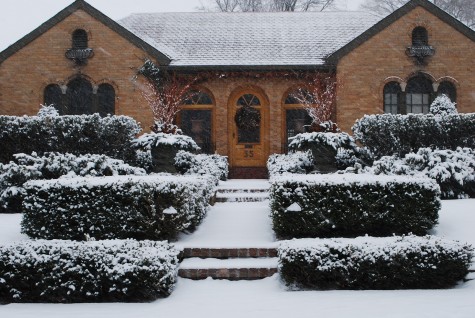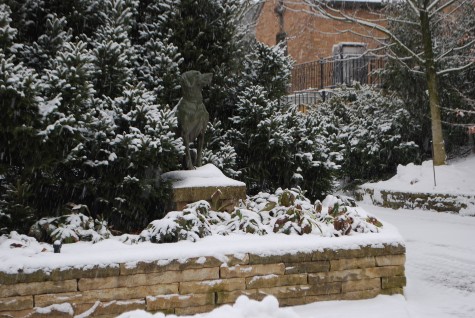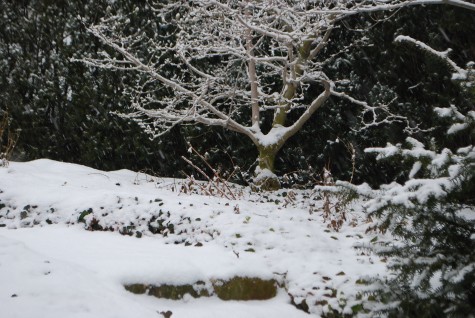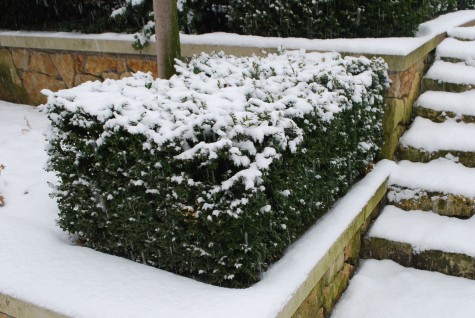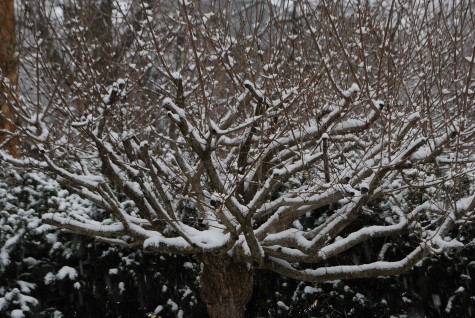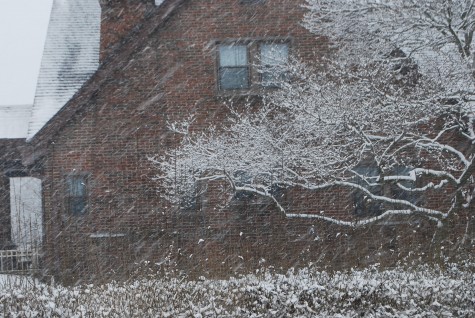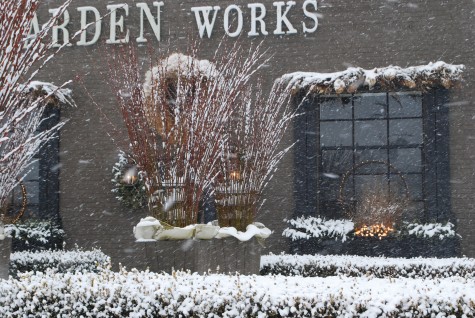Coppicing is a traditional method of producing long straight woody stems by cutting a tree or a shrub back to the ground. Many varieties of woody plants respond to this drastic treatment with vigorous growth-from the ground. Coppice wood was used to provide firewood in European countries where the number of trees were vastly outnumbered by a large population requiring fire for cooking and heat. Shrubby trees wre planted on the perimeters of farms; regular coppicing produced densely twiggy living fences.
The new shoots emerging from the stump of a tree grow long and straight. The juvenile growth is vigorous, and the color is vibrant. In England, the coppice wood from the sweet chestnut tree is still used to make fencing and fence poles for livestock and poultry. The sweet chestnut is coppicied on 12 to 18 year cycles, and then harvested to make fencing and gates. The poles come from coppice wood which is allowed to grow upwards of 30 years before cutting.
The fresh cut twigs which arrive at the shop in early November are grown by farmers who plant their shrubs in rows or blocks, like crops. Large fields are harvested in rotation, so every year there is a crop of long straight stems. Many of our twigs come from varieties of salix, or willow. Every gardener knows that the new or current year’s growth on a red twig dogwood shrub has the best color. Mature stems become woody, and the color dull. The new bark of coppice wood is lively. Newer cultivars of the redtwig dogwood have better and brighter color. The coppice wood of this redtwig dogwood cultivar is known for its especially brilliant color.
Once the leaves fall, those twigs which are ready are harvested, sorted by length, bundled and shipped. Most bunches are 10 stems, except for the curly willow. The winter color of curly willow stems is subtle, but no so its shape. The curving and curling stems provide lots of volume-these voluminous bunches are usually 5 stems. 5 stems of this gracefully airy and unpredictably curving willow can endow a winter container arrangement with lots of rhythm and movement.
Coppiced yellow twig dogwood is brilliantly yellow green. The twigs will be color fast the entire winter. Used in a winter container, it is not unusual for the stems to root, and leaf out in the spring. Though but a very few of the leaves are still clinging, the branches are vibrant at a time of year when most all else in the garden has gone dormant.
Flame willow is a striking coppery orange in color-quite unlike the bark of the trees and shrubs that grow in my garden. This warm cinnamon color is a standout in snowy and gray weather. This variety of willow is much more handsome in its twiggy state than it is as a green-leaved shrub.
Japanese fan willow was cultivated from a fasciated, or flattened natural stem. Many perennials and shrubs will exhibit this peculiar characteristic. Some azaleas that exhibit densely twiggy growth were propagated originally from fasciated stems. Fan willow is noted for its exotic shapes and forms. No two branches ever look the same.
Curly copper willow exhibits much the same habit of growth as the green curly willow. However the striking color means it will take fewer branches to make a statement in a winter container. Our coppice wood has arrived at just the right time. The cold temperatures outside will help keep them fresh, and the surface of the bark glossy. Thought the color will survive the winter perfectly intact, the warm weather in the spring will eventually dessicate and shrivel the stems.
But there is a place for dry stems in winter containers. Dead wood branches that have shed their bark can be beautiful in a winter arrangement. Bleached natural branches are dramatically pale in color, and are visible from a great distance.
The coppice wood-just one element of many that goes into a beautiful winter container arrangement.
